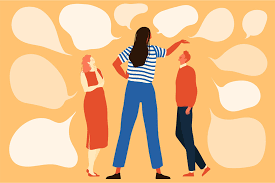Up On Their Feet
You know something I really dislike about attending workshops and meetings? Sitting in a chair for hours on end. Even if the presenter is highly engaging and full of bright ideas, the act of sitting still and listening tries both my physical and mental patience.
And you know what? It’s not just physically bad for us to sit for long stretches. Research shows that we actually think better when we are… yep, you guessed it, standing up.
I like to follow a personal rule of not letting participants sit still for more than 20-30 minutes at a stretch, so my transformational facilitation strategy for you all this time around is to challenge you to do the same. How can you structure your upcoming meetings or workshops so that participants spend as much time on their feet as in their chair?
If you’re feeling overwhelmed with my challenge, here are a few simple ideas:
- Start your session with an icebreaker that requires people to move around. One of my favorites is a quick mingle, mingle, mingle-type activity. Here’s how it works:
-
- Invite participants to stand up, walk around the room and stand back to back with someone who is their “shoe partner,” meaning, someone who has shoes that are similar (or opposite) to their own shoes. You could also ask people to stand back-to-back with someone who they’ve never talked with before, a birthday partner (same month, same year, same astrological sign), etc.
By the way, I ask people to stand back-to-back because it a) helps me see quickly who still needs a partner and b) keeps people from immediately starting to talk, which is harder to do when you are back-to-back.
-
- Once everyone has a partner, introduce an opening questions for discussion. Pairs should remain standing while they are talking to each other. Don’t forget to remind them to first turn around and introduce themselves, especially if they don’t already know each other! Discussion questions should be related to the topic(s) you are planning to cover in your engagement. So, if it was a workshop on facilitation, for example, I might ask the pairs to discuss the worst workshop they’d ever been to and what made it so horrible.
- Repeat this process three times with three different questions, so that everyone has a chance to talk with three different partners and move places on three different occasions. It goes without saying (but I’m going to say it anyway), that anyone with a physical need to sit should be allowed to do so! The point is to encourage movement, not make people uncomfortable.
- Create opportunities to stand during the engagement, especially during brainstorming. It’s no surprise to me that research is now confirming something that I have often noticed: people are more engaged in discussions and generate better ideas when they are on their feet. Instead of asking people to shout out brainstorming ideas from their seats, post up a piece of chart paper on a wall and have small groups stand around the sheets as they write their ideas down using markers.
- When all else fails, have people get up and stretch. If you really, truly cannot come up with a way to have participants stand during your workshop, then the least you can do is lead everyone in a three-minute stretch break.
- After tables have completed an activity together (e.g. finished a discussion, read a document, written responses to a question), invite everyone to stand up and find someone from a different table to share what they learned. Of course, you could just as easily do this debrief sitting down at their tables, but in the interest of getting people up on their feet, encourage them to walk around and hold their conversations standing.
- I always like to do my close-out standing up, and usually in a circle. I really feel that people not only think better when they are standing up, but listen better to each other as well. As you hold your closing reflections, consider doing so, in whatever form it takes, with everyone on their feet. While I have in the past done a mingle, mingle, mingle, I find that the energy at the end of a workshop or meeting is often a little more mellow, so simply standing in a circle feels more comfortable – we are still up, but we are not running around.
I’d love to hear your ideas for other ways to get participants up and moving around! Please do share in the comments below. And good luck with the challenge. Let me know how it goes.
